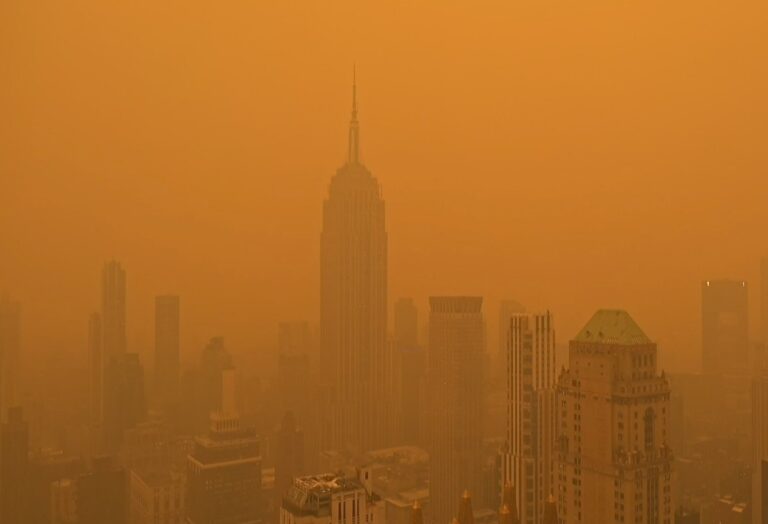A dense orange cloud is spreading over the skies of the north-eastern USA, including the metropolis New York.
The toxic dust comes, driven by winds, from Canada, where hundreds of fires have occurred in recent weeks.
Table of Contents
Smoke cloud hitting New York and the East Coast: danger for the health
The mayors of all affected localities are instructing their citizens to avoid dangerous poisoning, while residents and tourists in Manhattan watch in disbelief and concern as what is happening above their heads.
In New York and Washington, public schools have cancelled all planned outdoor activities, while in Philadelphia, authorities have urged citizens to stay indoors.
“Stay indoors or wear masks outdoors,” New York City Mayor Eric Adams similarly recommended, branding the worsening air quality an “unprecedented event.” The cloud in the skies is also impacting air traffic on the East Coast.
The Federal Aviation Administration has ordered a halt to all flights departing for New York’s LaGuardia airport, while those bound for Newark airport have been delayed for several hours while waiting for the Nuba causing poor visibility for pilots to clear.
Air quality and forecast for the coming days
According to the AirNow portal, the air quality level is over 200 in Queens and the Bronx, and has exceeded 400 in Syracuse – on a scale where levels above 100 indicate ‘unhealthy’ air and above 300 ‘dangerous’ air.
According to Mike Hardiman, a meteorologist with the US National Weather Service, quoted in the New York Times, the city of Binghamton ‘looks like Mars and smells like cigars’.
In New York itself, according to the authorities, the air quality is the worst it has been since the 1960s.
According to the National Weather Service, the cloud will remain over the skies of the affected cities for a couple of days, as forecasts indicate a stagnant atmosphere over the next 48 hours. Indeed, the cloud may move westward affecting other cities in the coming days, including Pittsburgh.
Read also: Climate change: what areas of the world are most vulnerable to extreme heat waves












